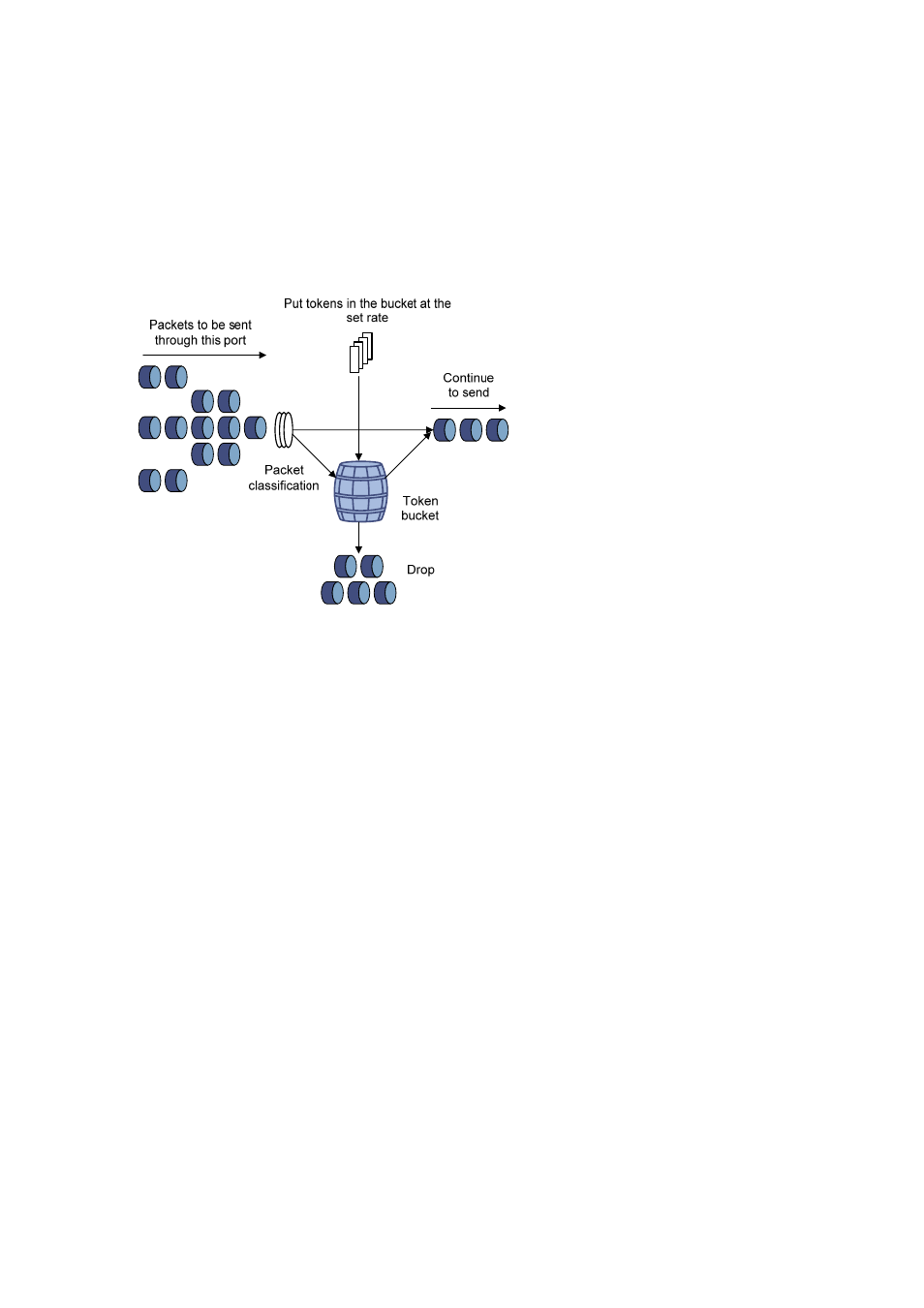Traffic evaluation and token bucket, Token bucket, Evaluating traffic with a token bucket – H3C Technologies H3C WX6000 Series Access Controllers User Manual
Page 432: Complicated evaluation

44-5
Traffic Evaluation and Token Bucket
Token Bucket
A token bucket can be considered as a container with a certain capacity to hold tokens. The system puts
tokens into the bucket at a pre-set rate. When the token bucket is full, the extra tokens will overflow and
the number of tokens in the bucket stops increasing.
Figure 44-4
Evaluate traffic with a token bucket
Evaluating Traffic with a Token Bucket
The evaluation for the traffic specification is based on whether the number of tokens in the bucket can
meet the need of packet forwarding. If the number of tokens in the bucket is enough to forward the
packets, the traffic is conforming to the specification; otherwise, the traffic is nonconforming or excess.
When the token bucket evaluates the traffic, its parameter configurations include:
z
Average rate: The rate at which tokens are put into the bucket, namely, the permitted average rate
of the traffic. It is generally set to committed information rate (CIR).
z
Burst size: The capacity of the token bucket, namely, the maximum traffic size that is permitted in
each burst. It is generally set to committed burst size (CBS). The set burst size must be greater
than the maximum packet length.
An evaluation is performed on the arrival of each packet. In each evaluation, if the bucket has enough
tokens for use, the traffic is controlled within the specification and a number of tokens equivalent to the
packet forwarding authority must be taken out; otherwise, this means too many tokens have been used
— the traffic is in excess of the specification.
Complicated Evaluation
You can set two token buckets in order to evaluate more complicated conditions and implement more
flexible regulation policies. For example, traffic policing uses four parameters:
z
CIR
z
CBS
z
Peak information rate (PIR)
